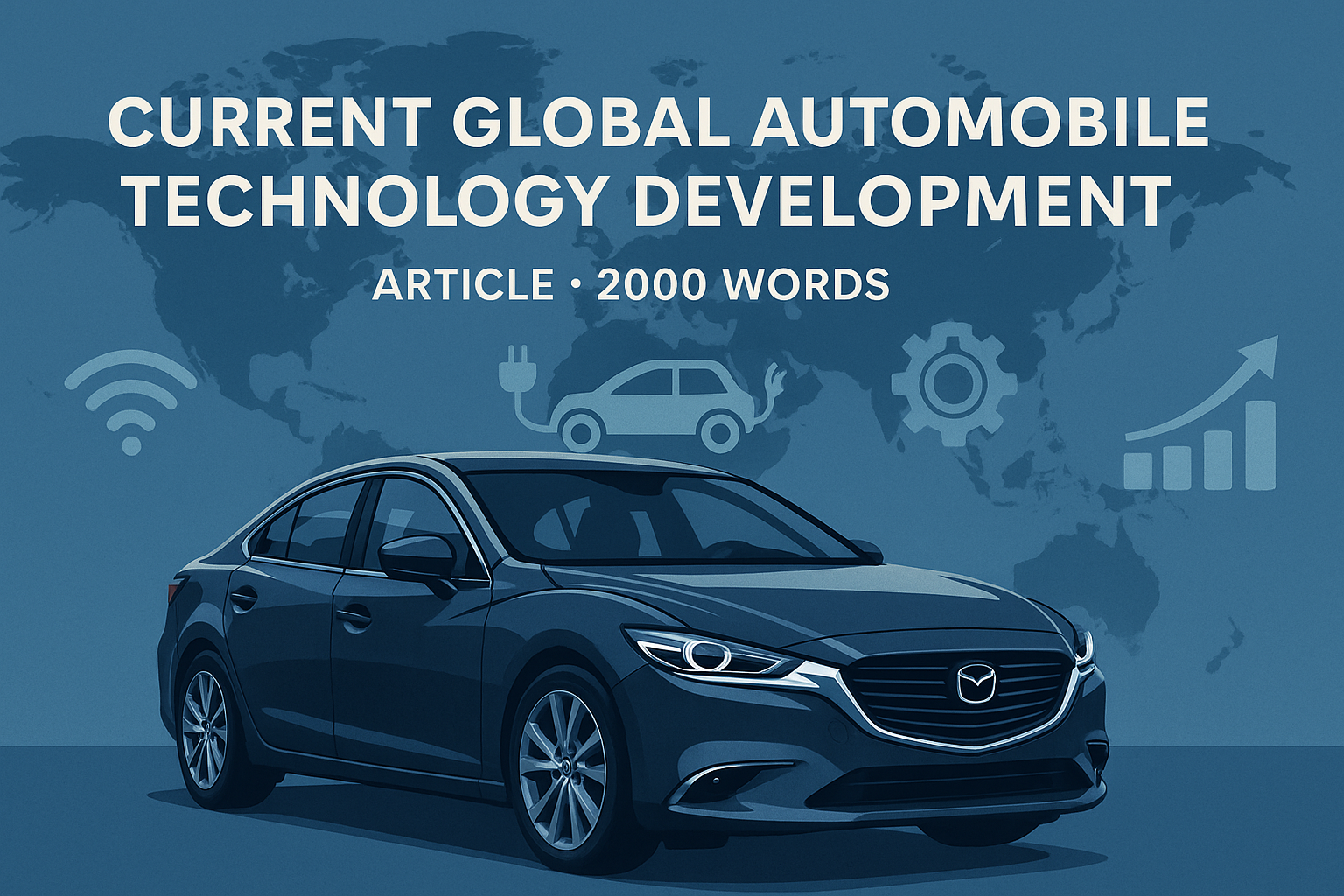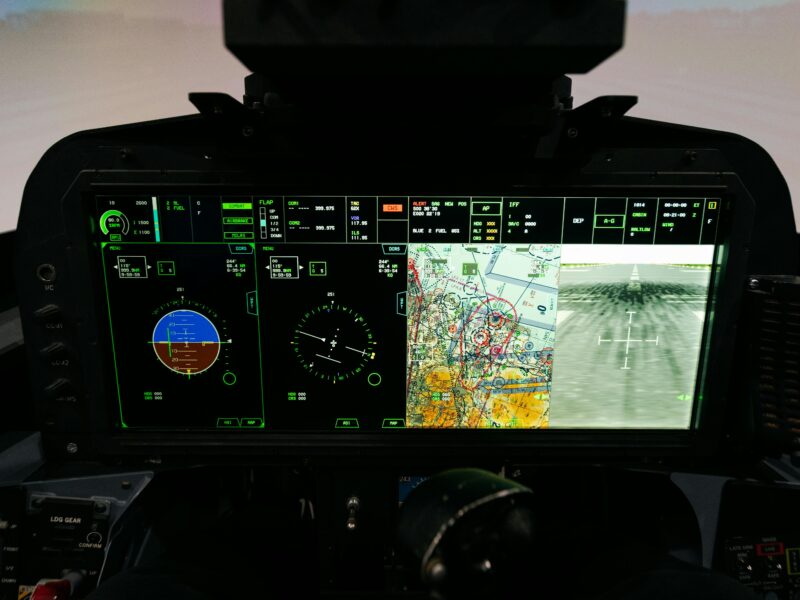The global automobile industry is undergoing its most significant transformation since the invention of the motor car. This change isn’t just about sleek electric cars or voice-activated controls; it’s about rethinking how we move, how we power our vehicles, and how we live. Whether you’re a casual driver, a tech enthusiast, or someone curious about what’s around the corner, the wave of change is impacting everyone. So let’s buckle up and take a deep dive into the current developments shaping the future of automobiles around the world.
1. The Electric Revolution – More Than Just Cars Without Gas
For decades, gasoline and diesel engines ruled the roads. But today, the hum of electric motors is growing louder. Electric Vehicles (EVs) are no longer niche products—they’re fast becoming mainstream. Tesla may have started the trend with its futuristic cars and bold promises, but now every major automaker from Ford to Hyundai is in on the action.
Why this sudden surge? Part of it is environmental—governments and consumers are increasingly concerned about climate change and urban pollution. But there’s also the irresistible appeal of performance. EVs offer instant torque, lower maintenance, and a smoother ride.
Battery technology is the heart of the electric revolution. Modern lithium-ion batteries have improved significantly in energy density, charging speed, and lifespan. Companies like CATL and Panasonic are working on next-gen batteries—solid-state batteries—that could double range and halve charging times.
Charging infrastructure is catching up too. Fast chargers are popping up everywhere, from gas stations to grocery store parking lots. In Europe, policies are being implemented to mandate charging stations in new buildings. In Asia, EVs are becoming a critical solution to smog-choked cities, especially in countries like China and India.
2. Autonomous Vehicles – The Road to Self-Driving Cars
Imagine commuting without having to touch the steering wheel. That’s not a sci-fi dream anymore. Self-driving or autonomous vehicles (AVs) are under active development by tech giants and carmakers alike—think Waymo, Apple, NVIDIA, Tesla, and BMW.
AVs use a combination of sensors like LiDAR, radar, and cameras, along with powerful artificial intelligence (AI), to navigate roads. But creating a car that can drive itself safely under all conditions is a massive challenge. It’s not just about technology—it’s also about public safety, regulations, and trust.
We currently classify autonomy in levels from 0 to 5:
- Level 2 is where most cars are today—think adaptive cruise control and lane-keeping assist.
- Level 3 and beyond involve more vehicle autonomy, with the driver gradually stepping out of the equation.
- Level 5 would mean full autonomy—no steering wheel, no pedals, no human intervention.
As of now, AVs are being tested in select cities and regions under strict conditions. In places like Phoenix, Arizona, robotaxis already shuttle passengers without human drivers. China’s Baidu is also testing autonomous fleets in urban areas. But mass deployment is still a few years away, largely due to concerns around safety, regulation, and public acceptance.
3. Connected Cars – Driving in the Cloud
Think of your car as a smartphone on wheels. That’s the promise of connected vehicles. Today’s cars are equipped with more sensors, connectivity, and computing power than ever before. They can communicate with other cars, with traffic infrastructure, and even with your smart home.
These features open up countless possibilities:
- Real-time traffic updates and rerouting
- Predictive maintenance alerts
- Remote control of vehicle functions via mobile apps
- In-car entertainment streaming
- Over-the-air software updates
5G is supercharging this trend. Ultra-fast, low-latency networks mean your car can respond instantly to road conditions, communicate with smart traffic lights, or receive safety alerts from vehicles ahead. This technology—called V2X (Vehicle-to-Everything)—can drastically reduce accidents and congestion.
Cybersecurity, however, becomes a critical issue. A connected car is potentially a hackable car. Automakers and cybersecurity firms are investing heavily in securing vehicle software and networks to prevent breaches.
4. Sustainability – Rethinking Manufacturing and Materials
The push for green vehicles goes beyond tailpipe emissions. Automakers are rethinking how cars are made, what they’re made of, and how they’re disposed of.
Many manufacturers are using recycled or eco-friendly materials. BMW uses recycled plastics and natural fibers. Tesla’s Gigafactories aim for zero-emission manufacturing. Volvo has committed to producing only electric vehicles by 2030 and wants its entire supply chain to be climate-neutral.
Another exciting development is the concept of a circular economy. Instead of discarding old batteries or car parts, they’re reused or repurposed. Battery recycling is a booming industry—recovering lithium, cobalt, and nickel reduces the environmental footprint and eases resource constraints.
Moreover, car-sharing and mobility-as-a-service platforms like Uber, Ola, and Zipcar are helping reduce the number of cars on the road, making transport more efficient and sustainable.
5. The Rise of Smart Mobility and Urban Planning
Technology isn’t just changing cars—it’s changing cities. Urban planners are rethinking transportation systems to support cleaner, safer, and more efficient mobility. Smart cities are investing in intelligent transport systems (ITS), public EV charging stations, dedicated lanes for autonomous shuttles, and integrated app-based mobility platforms.
For example, in Singapore, real-time data is used to manage traffic lights dynamically. In Amsterdam, residents use apps to book multi-modal trips involving e-bikes, trams, and shared cars. These trends are encouraging people to think beyond personal car ownership.
Micro-mobility is also booming—e-scooters, electric bikes, and compact city EVs are transforming short-distance travel. These small vehicles are ideal for reducing congestion and pollution in urban environments.
6. AI and Machine Learning – The Brains Behind the Wheel
Artificial Intelligence is becoming the unsung hero of modern automobiles. From facial recognition for driver fatigue detection to adaptive learning for personalized settings, AI is making vehicles smarter and safer.
Some key AI-powered advancements include:
- Driver assistance systems that adapt to your habits
- Voice assistants that control navigation and entertainment
- Smart diagnostics that detect and predict issues before they happen
- AI-powered traffic management systems in smart cities
In autonomous vehicles, AI interprets sensor data in real time, predicts other drivers’ behaviors, and makes split-second decisions to avoid collisions. As these systems learn over time, they become better at understanding complex driving scenarios.
7. Global Landscape – Who’s Leading the Charge?
Different regions are contributing to automotive innovation in unique ways:
- United States: Home to Tesla, Rivian, Lucid, and the birthplace of AV testing. U.S. companies are heavily focused on software, AI, and consumer tech integration.
- Europe: Pioneering sustainability and stringent emission standards. Brands like Volkswagen, BMW, and Mercedes-Benz are investing in EVs, hydrogen tech, and circular manufacturing.
- Asia: China is the world’s largest EV market and a leader in battery production. Japan and South Korea focus on hybrid tech, hydrogen fuel cells, and robotics.
Each region faces unique challenges—whether it’s building charging networks in rural areas or shifting consumer mindsets. But the common thread is clear: innovation is borderless, and collaboration is key.
8. Challenges and Roadblocks
Despite the progress, there are hurdles:
- High EV costs remain a barrier in developing countries.
- Charging anxiety (lack of chargers) still affects buyer decisions.
- Data privacy concerns loom large with connected vehicles.
- Regulatory uncertainty around AVs slows development.
- Material sourcing for EV batteries raises ethical and environmental concerns.
But where there are challenges, there are also opportunities. Startups, governments, and traditional players are working together to solve these issues and create a more inclusive, clean, and tech-driven transport future.
Conclusion: Where Do We Go From Here?
The automobile is no longer just a means of transport—it’s becoming a part of a larger digital, environmental, and urban ecosystem. Cars are turning into electric, intelligent, and connected companions. Cities are adapting. Consumers are evolving.
We’re not just witnessing a change in how cars are made—we’re witnessing a change in how we live and move.
So whether you’re eyeing your next electric ride, watching the progress of driverless taxis, or dreaming of cars that talk to buildings, one thing’s for sure: the journey of automobile technology is far from over—and the best part might just be around the next corner.



